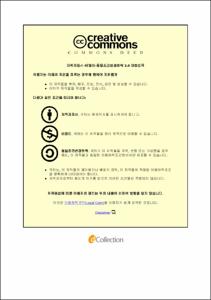Ulsan Univ. Repository
Thesis
General Graduate School
Computer Engineering & Information Technology
2. Theses (Ph.D)
Fall Detection System for Elderly People using Vision-Based Analysis
- Abstract
- The number of elderly people topped 14 percent of the total population in South Korea as per the reports from Statistics Korea. The ageing population in Korea is projected to be the most rapid among Organization for Economic Co-operation and Development (OECD) countries between 2000 and 2050. Due to the physical weakness associated with ageing, injury is a major global health concern. In a study by the burden of disease in South Korea, injuries such as falls, motor vehicle collisions (MVCs) and suicides were included in the top cause of disability. MVCs and suicides are decreasing compared to falls in the recent years. In this paper we are proposing a method to detect falls based on vision analysis.
Fall is one of the major causes of death in elderly aged people. Timely and accurate detection of falls is an essential factor to protect elderly people from reduced risk, especially those who live independently. Detecting the fall plays a major role in saving lives. Three different types of fall detection systems are commonly used, such as wearable, ambient sensor and vision-based methods. Various existing methods are analyzed and compared in the literature review. Even though, wearable sensors are giving better results, the main drawback associated is the inconvenience to elderly people since they must wear sensors all the time for efficient tracking and detection. There are drawbacks associated with ambient sensor-based systems as well such as acoustic sensors and floor vibration sensors are easily affected by noises such as TV sounds and other noises from the environment. In this research, focus on vision-based approaches to detect falls since cameras provide very rich information about the object and the environment. Nowadays cameras are installed in most of the places such as airports, train and bus stations, malls and even in the streets. Due to security reasons, even old age homes and the elderly care centers are installed with cameras. Proper utilization of the existing cameras would help us implement the system effectively and efficiently to monitor the elderly and detect a fall. The proposed algorithm is cost effective, easy to implement and useful for real-time applications. This system will provide an immediate attention and care to the aged group of people. Vision based system are better than other methods and this is explained in the literature section.
This research presents a real-time vision- based fall detection system to support the elderly people through analyzing the rate of change of motion with respect to the ground point. The aim of our work is to provide an efficient method to detect fall, without wearing any physical devices. Image processing technique is used for detection the human from a video captured by the camera. After human detection the detected object is tracked by using Kalman Filter. One of the main advantages of this work is that, we are using 2D images and not the (3D) depth images.
The proposed method is a combination of ground point estimation based on texture segmentation using Gabor filter and a person’s movement tracked by using a Kalman filter. This calculates the angle between the tracked points with respect to a ground point and calculates the rate of change of angle for detecting the fall detection.
For experimental analysis, we used two publically available datasets such as URFD and FDD. Along with this, we have created some data sets in our lab environment to test the suitability of the algorithm for real-time applications and analyzed different parameters such as sensitivity, accuracy and specificity. Test results shows that our system was able to achieve accuracy of 90.53% with a sensitivity of 91.17% and specificity of 96%. We believe that the proposed system will provide a better and efficient support system for elderly people who live independently.
- Issued Date
- 2020
- Awarded Date
- 2020-08
- Type
- Dissertation
- Alternative Author(s)
- Thathupara Subramanyan Kavya
- Affiliation
- 울산대학교
- Department
- 일반대학원 전기전자컴퓨터공학과
- Advisor
- 조상복
- Degree
- Doctor
- Publisher
- 울산대학교 일반대학원 전기전자컴퓨터공학과
- Language
- eng
- Rights
- 울산대학교 논문은 저작권에 의해 보호받습니다.
- Appears in Collections:
- Computer Engineering & Information Technology > 2. Theses (Ph.D)
- 파일 목록
-
-
Download
 200000334304.pdf
기타 데이터 / 2.59 MB / Adobe PDF
200000334304.pdf
기타 데이터 / 2.59 MB / Adobe PDF
-
Items in Repository are protected by copyright, with all rights reserved, unless otherwise indicated.